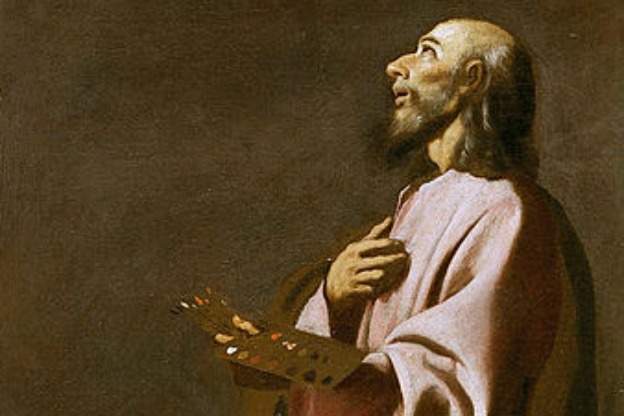
"Color is the keyboard, the eyes are the hammers, the soul is the piano with many strings. The artist is the hand that plays, touching one key or another purposely, to cause vibrations in the soul."
The 20th c. painter, Wassily Kandinsky wrote that sentiment in his 1911 The Effect of Color.
Kandinsky's analogy illustrates that the connection between visual art and musical sound is strong-one informing and expressing the other-and it's this connection between art and music that a 2014 Cypress Records release from the Huelgas Ensemble explores. Titled La oreja (the ear) of Zurbarán-the CD uses the life and work of the 17th century artist, Francisco de Zurbarán as a point of departure for a recording that reflects the music of his era.
The Spanish Golden Age
Zurbarán flourished during the Spanish Golden Age. Much of his art is sacred or religious in nature, embodying the culture of the counter-reformation Church that was defined by a pervading sense of mysticism. Visions, intense devotion, aspirations for ecstasy, for a transcendent encounter with God, for a union with the divine…these all fed a religious zeal. Music-in this case, sacred polyphonic vocal music-was a vehicle through which individuals transitioned from the temporal to the spiritual world. And art-in this case, Zurbarán's paintings-idealized and propagated the enraptured state.
Francisco de Zurbarán
In terms of style, Zurbarán is sometimes compared with Caravaggio given his strong use of chiaroscuro-that is his contrasting use of light and dark that reinforced the three-dimensionality of a subject. You can see some examples of Zurbarán's art included in the booklet that comes with the CD from the Huelgas Ensemble. One painting that illustrates a connection with the spiritual is Zurbarán's Ecstasy of St. Francis, a striking depiction of the saint caught in a revelatory vision with his lips parted and eyes turned up.
The most unusual, though, is  Zurbarán's St. Luke as a painter before Christ on the cross. The expression, is again, one of enlightenment, of a vision. Facing the cross, palette in left hand, right hand over heart, we see an artist (st. Luke, or presumably by extension, Zurbaran himself) in a pose of devotion and humility.
The Huelgas Ensemble
What sounds might have been heard in tandem with the colors of  Zurbarán's brush? The recording from the Huelgas ensemble offers us a glimpse. Since Zurbarán worked for ecclesiastical Spanish patrons, the music on this disc mostly feature composers who had similar patrons. In large part, these composers worked as capellmeisters in Spanish chapels, and interestingly, several of them are largely unfamiliar names.
Andreas Barea, for instance was chapelmaster at the cathedrals of Osma, Salamanca, Valladolid, and Palencia. His Miserere mei Deus-scored in 8 parts for a double, split choir in the chori spezzati tradition-contains some wonderful chromatic moments.
Another piece I really enjoyed from this recording is  Jose de Vacquedano's lamentations of Jeremiah the Prophet, also scored in 8 parts. One striking section is a 35 bar melisma on one word that opens the last verse. The setting of that one word lasts well over a minute, and is an example, the liner note tells us, representative of the culture of the time, and its "sensual craving for infinity."
As much as the church permeated Spanish 17th c. culture, Zurbarán was also a man of the world and three examples of the secular music of the time are also included on this disc.  Manuel Machado's Dos estrellas le seguen takes its text from poetry by Lope de Vega.









